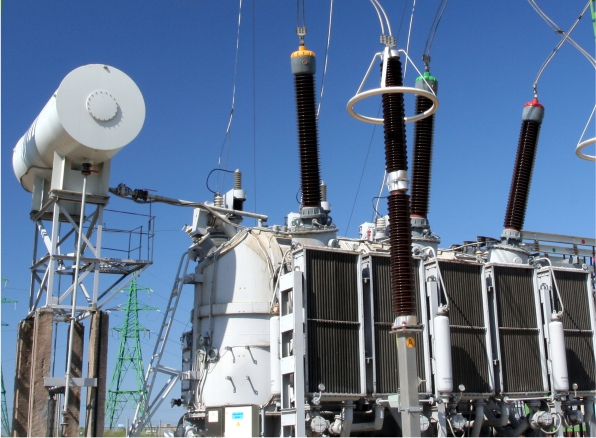What is a Transformer Bushing?
In electrical engineering, the term "bushing" refers to a hollow electrical insulator that allows us to safely pass an electrical conductor through a conducting barrier without creating an electrical connection with it, such as the case of a transformer or a circuit breaker.
Porcelain typically makes up a bushing. In actuality, however, a number of alternative insulating materials, including polymer, ceramic, glass, etc., might also be employed for the same function.
When a substance possesses an electric charge, an electric field is created. Consequently, when a current-carrying conductor is positioned close to a material at zero potential, the field strength can increase to a very high value, especially in situations where the electric field lines are compelled to bend sharply around the substance. The bushing in this case regulates the size and strength of the electric field, which lessens the electrical forces acting on the insulating material.
Transformer Bushing's Design and Construction
Transformer bushings come in two varieties: Solid Type Bushing and Condenser Type Bushing, based on their design and manufacture.
Bulk-type bushing is another name for the solid-type bushing. An electrical-grade mineral oil is placed between the insulator and conductor of a solid-type bushing, which comprises of an insulator with a central conductor. The bushing's dielectric strength is boosted as a result.
A capacitance-graded bushing is another name for the condenser-type bushing. In the condenser-type bushing, many conducting layers are put within the insulation separating the centre conductor from the bushing's insulator at predefined radial intervals. The conducting layers of the bushing have a capacitive effect. The major purpose of these conductive layers is to regulate the electric field around the main conductor.
Operating Principle of a Transformer Bushing
The windings of a transformer are exposed to high voltage from the transmission cables in the electrical power system. In order to prevent flashover from the high voltage connection contact with the transformer body, it is crucial that we carefully insulate the current-carrying components from the non-current-carrying parts.
A particular insulating tool known as a bushing is employed for this purpose. Bushings are employed largely in high-voltage power transformers, although not being used in all types of transformers. The primary and secondary windings of a power transformer linked to a power system are both connected to a high-voltage line, which explains why.
As a result, we must be cautious around high-voltage electric fields. In order to give the transformer terminals the necessary insulation, we employ bushings.
Failure of a transformer bushing
One of the most significant reasons for a transformer to fail is a failed transformer bushing. Ingress of moisture, electrical flashover, short-circuiting of capacitance-graded layers, lightning surges, corrosive sulphur, broken tap connections, improper use of the bushing, broken connection between flange and ground sleeve, etc. are the main causes of bushing failure.
Transformer Bushing Failures Diagnosis
To determine the state of a transformer bushing, the techniques listed below must be used:
- To evaluate the quality of the insulation of the bushing, do the tan delta test, power factor measurement, dissipation factor measurement, and capacitance measurement at the line frequency.
- Measure capacitance simultaneously to evaluate the bushing's physical state.
- To identify conductive impurities, loose top terminals, potential discharge-like concerns, etc., do the VFPF Test (Variable Frequency Power Factor Test).
- To identify deterioration, low liquid or compound levels, voids in the compounds, and contamination, do hot collar tests.
- To find out how much the bushing insulation has deteriorated, conduct a dielectric frequency response test (DFR).

.jpg)
Comments
Post a Comment